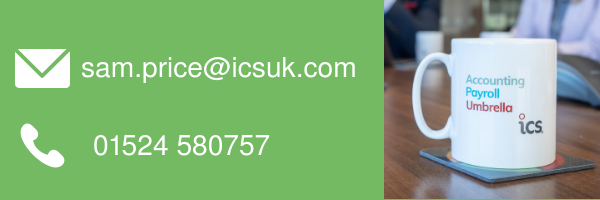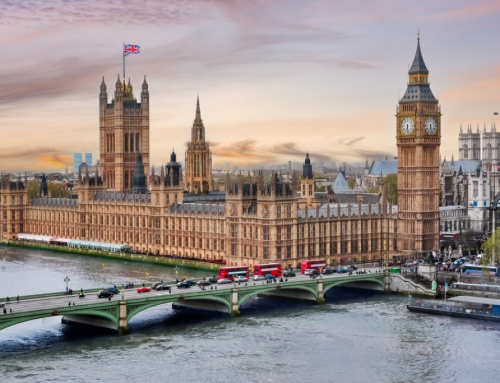The chancellor Phillip Hammond announced his plans for the year ahead in the Autumn Budget. ‘Fiscal Phil’ was cautiously optimistic with improved growth and reduced borrowing forecast. To quote; “the era of austerity is finally coming to an end” – a view that was not shared across the benches. This manifested in the form of increased personal allowances and higher rate tax bands, alongside giveaways in defence, education, and the ever popular… potholes!
Unsurprisingly, Brexit was a key topic, with a commemorative 50p announced alongside a more sober £500m boost to preparations for the departure. However, it was widely discussed in the run up to this budget that should no deal be struck with the EU on withdrawal, another budget would be necessary.
Hidden in the supporting documentation was £100,000 to support the development of proposals for Eden Project North in Morecambe. In addition, £37m was pledged to better connect the cities of the North under the title of Northern Powerhouse Rail, while there was a pledge to publish a refreshed Northern Powerhouse Strategy in 2019.
Personal taxes
The personal allowance was boosted to £12,500 from £11,850, and the higher rate threshold to £50,000, from £46,350, a year earlier than promised. A basic rate taxpayer will benefit by up to £130 per year, while a higher rate taxpayer could be better off by another £730 on top. Going forward, these rates will rise by reference to the Consumer Price Index.
The National Living Wage, the minimum for those over 25 will increase 38p to £8.21 per hour. The rates for younger workers increase accordingly:
- 21 to 24 year olds by 4.3% from £7.38 to £7.70 per hour
- 18 to 20 year olds by 4.2% from £5.90 to £6.15 per hour
- 16 to 17 year olds by 3.6% from £4.20 to £4.35 per hour
- apprentices by 5.4% from £3.70 to £3.90 per hour
Modest increases were announced relating to National Insurance, with the primary threshold rising to an annual equivalent of £8,632 from £8,424 – a popular level for a tax-efficient director’s salary. For the self-employed, the chancellor stuck with the reversal of his decision to abolish Class 2 NI and reform Class 4 NI and instead delivered small rises in thresholds.
The Chancellor held firm with the much-criticised Universal Credit reform, but announced work allowances would increase by £1,000.
The capital gains allowance will rise to £12,000, from £11,700.
The tax relief on capital gains made on a taxpayer’s main residence was reduced. The final 9 months, rather than 18 months will now be exempt, alongside periods of occupation and other qualifying periods. Lettings relief, which can reduce gains in periods when the property is let but not occupied will be reformed, but relief only available when the owner jointly occupies with a tenant.
Drivers were rewarded with another fuel duty freeze. Beer, cider and spirit drinkers benefitted from a freeze also, with only wine to suffer an inflationary increase in duty.
A valuable relief available to business owners selling, or closing their business: Entrepreneur’s relief, was protected, but the qualifying condition of 12 months ownership before eligibility was doubled, to 24 months.
From 2020, medium and large enterprises will have to determine whether someone is caught by IR35, a ‘disguised employee’. The determination previously sat with the contractor, and the impact of this will likely be more workers will suffer deductions of income tax and national insurance, alongside employers NI, at source.
The pension annual allowance will remain at £40,000 with the potential to bring forward unused allowances from the previous 3 years. The allowance is tapered as total income exceeds £150,000. The lifetime allowance rose by an inflationary amount.
There were no ISA announcements, therefore we expect the £20,000 allowances to remain across Cash, Stocks and Shares, Innovative Finance and Lifetime.
Business taxes
There was no change announced to the corporation tax rate, remaining at 19%, with the commitment to a reduction to 17% by 2020 reiterated.
£900m was announced in business rates relief, alongside £650m for the high street that was announced at the end of last week. Rates bills for businesses with a rateable value under £51,000 will be cut by a third over the coming two years.
A new digital services tax was announced, at 2% from 2020, with the chancellor taking further aim at tech giants accused of not paying their fair share.
The annual investment allowance has been increased for a two-year period from January 2019, meaning the maximum tax relief on the first £1m of investment in assets, an increase from £200,000, for large businesses making sizeable investments.
Capital allowances on assets in the ‘special rate’ pool – applicable to long-life assets, integral features and higher emissions vehicles – were reduced from 8% to 6% per annum.
A new Structures and Buildings Allowance was announced, giving a 2% tax allowance on construction of new non-residential properties.
Mr Hammond had announced in the 2017 autumn budget that he would freeze the VATthreshold for two years for a period of consultation, but he went further to state that it would be frozen for a two-year period from 2020. This ends speculation of a dramatic cut but the 5-year freeze will deliver a real-terms reduction which achieves a thinly-veiled aim of bringing more businesses into the VAT regime.
Research and Development tax credit for loss-making companies will be restricted, to three times PAYE/NI deductions in that period, tackling abuse that has arisen from artificial structures but hopefully not harming those which use it properly and find the boost invaluable.
The £3,000 Employment Allowance, which reduces or removes a liability for Employers National Insurance will only be available to businesses with an Employers NI bill of under £100,000.

















